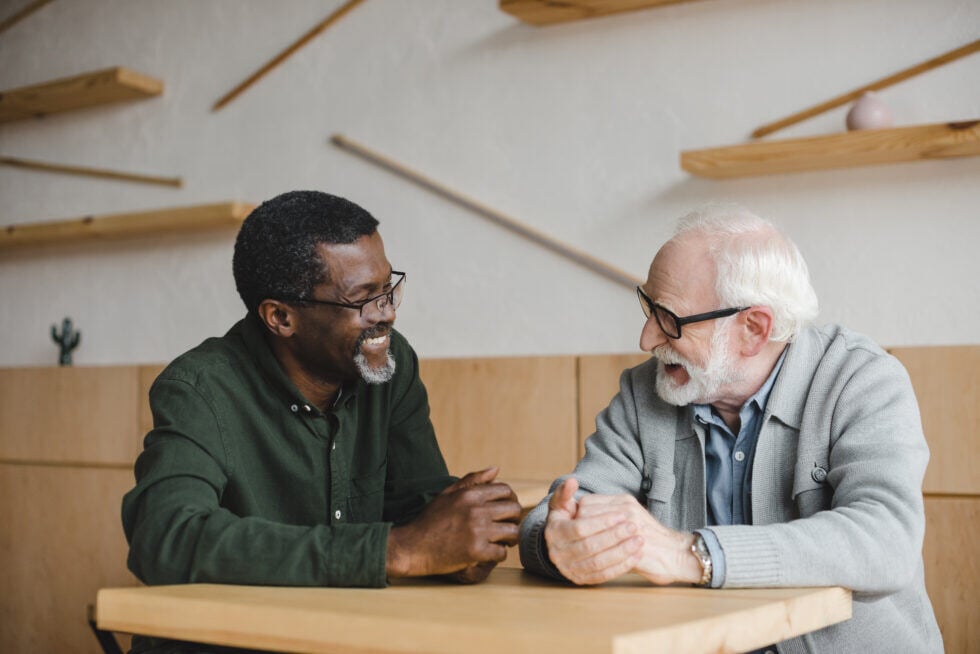Why Your Donor Doesn’t Talk About Their End-of-Life Charitable Plans
“How many of your donors have made a planned gift?” A question like this, or really anything related to“planned giving,”strikes terror into your...
3 min read
Karen Kendrick : September 12, 2022

If your donor seems hesitant to meet with you, it might be because of how you run your meetings. Here’s a different way to think about donor conversations which will change how you organize and execute them. But first, let me give you some context for what I want to share with you.
One of most notable features of Arab culture is their hospitality. Their ultimate goal is to break the ice, honor the guest, make them feel part of the family, and lessen any awkwardness or fear of getting to know new people.
My parents are American, but I had the privilege of being born and raised in the Arab culture in Nazareth, Israel. Stopping in at someone’s home or having a visitor was an experience every time. As a kid I spent endless hours being bored during two-hour visits with neighbors or friends. But as I grew up, I begin to appreciate the beauty and gift of the Arab ritual of hospitality.
One thing I learned is how having a rhythm, ritual, and even expected things to say or ask helps to lower the stress of new conversations.
For instance, when you are asked over for coffee in an Arab home, you are not just going for coffee! There will be an expected series of cold drinks, fruit, nuts, cake, and you must end the visit with a sweet dark shot of tasty Arab coffee.
During those rounds of food, there are expected things everyone says. The host says “Welcome” a lot and the guest says “Bless your hands” while saying how amazing the food is. People typically ask about family members and want to hear how everyone is doing. A guest may lack great conversational skills, but still enjoy a visit, and feel welcomed and appreciated.
And having this structure also meant you could relax into the experience of connection.
When I ask participants in our Veritus Certification Courses what was the most helpful thing they learned, many times they share that it was our Permission-Based Asking Model. That always intrigues me, because I would say most fundraisers are pretty gifted in communication and conversation. But similar to the rituals of Arab hospitality, the structure of this communication model helps you remove the awkwardness that can happen when getting to know someone new. With this framework around your donor conversations, you can move more quickly and consistently into meaningful communication and connection.
The Permission-Based Asking model helps you create an expectation, a ritual of sorts, that your donors can relax into and feel welcomed and honored as partners. We have many stories of donors saying that it was the best conversation they’d ever had with a fundraiser after experiencing this model of communication. It lowers their anxiety and gives them a container for communication that is interesting, engaging, and meaningful.
One way you help create that container is to align with the donor at the beginning of the meeting. It can sound something like this…
“Before we get started, I want to check in on a few things. First, we discussed having 30 minutes to meet; does that still work for you?”
Check in on how much time they have, at the beginning and toward the end. No matter how well the conversation is going, it builds trust that you will use their time wisely and respectfully. They will be more open to meeting with you again in the future.
“I also mentioned in my email that my objective for this meeting, just so I’m being clear, is not to ask for a gift, but to learn more about your interest and passion for the work we do.”
Letting a donor know upfront that you will or will not be asking for a gift sets a clear expectation. That way they won’t worry about when you are going to drop that ask into the conversation. This allows them to lean into the conversation and engage more fully.
“To do this, I am going to play two roles. I will facilitate the meeting to keep us on track, but will also will be checking in on my understanding, as well as the speed and rhythm you are comfortable with.”
Even a talkative donor that tends to take over meetings will appreciate you managing the time well and keeping the conversation on track. So practice your transition questions (“Shall we get started?: Or: “Are you good with me asking some questions now to learn more about your history with our organization?”). These cues will help donors to appreciate the depth of conversation and know they can redirect if they so desire. A great way to think about this is the donor is the driver, but you are their GPS.
“Secondly, in my role as a partner I will be asking questions, listening, and learning more about your interests. I want to know how I can connect you to our work in more meaningful ways. That means it’s important to me that you ask questions, push back, and direct where you want our conversations to go.”
The donor can relax knowing you are not there to push them toward a specific decision. You’re just trying to figure out together what they are inspired to engage in. Imagine after having one experience of this conversation style, how much more open donors will be to meeting with you.
Because there is a rhythm and structure, not only does the donor relax more, but you do as well. You can focus more on listening, being curious, and asking open-ended questions as you tune into cues from your donors. As you prepare for year-end, check out the Permission Based Asking Model and start practicing your facilitation and open-ended questions. Your donors will love it, and you will be inspired by what you learn. Donors will be even more open to meeting with you this fall to talk about their interest in giving.
Karen

“How many of your donors have made a planned gift?” A question like this, or really anything related to“planned giving,”strikes terror into your...

I still remember that icky feeling I’d get after an awkward conversation with a donor. Phone calls in particular can feel weird for a number of...

As a leader, when someone on your team is being territorial and difficult, it’s a good idea to pause and think about why. Possibly, like Jeff just...